Common Types
Stainless steel pet bowls
● Stainless steel bowls are super easy to clean, dishwasher-safe, and non-porous.
● These bowls won't hold on to any harmful bacteria.
● Stainless steel bowls are extremely durable and unbreakable. If you have a Pet that slaps their bowl around, then you definitely need to go with stainless steel. You won't have to worry about the bowls chipping, breaking, or cracking.
● You can find stainless steel bowls in various sizes, and they're relatively inexpensive, especially considering all of the benefits.
● They're lightweight. Look for bowls with non-skid rubber bottoms, or place them on a non-skid mat.
Plastic pet bowls
● Plastic bowls are accessible and inexpensive.
● They come in a vast array of styles, colors, and sizes.
● Your Pet can knock it around for days, and it's highly unlikely to break.
Silicone pet bowls
● They're easy to clean, dishwasher-safe, and convenient for travel.
● They come in lots of colors.
● They're relatively durable as far as being knocked around, or dropping is concerned.
Product Features
Quality and durability: The pet feeding bowl is a paragon of craftsmanship. Made from high-quality ceramics, it is incredibly durable and designed to withstand frequent use. Whether your pet is a dainty diner or a boisterous eater, this sturdy bowl promises to remain in service for years to come, making it a sound investment for your pet's meal times.
Optimal weight: Pet feeding bowl a perfect balance, this bowl is neither too heavy nor too light. This ensures it stays put while pet eats or drinks, preventing spills and messes. At the same time, it's lightweight enough for you to handle and clean with ease.
Versatile use: The bowl's design accommodates both food and water, making it a versatile addition to your pet's accessories. A pair of these bowls - one for food and the other for water - not only caters to your pet's dining needs but also enhances the overall aesthetic of your pet's feeding area.
Easy to clean: Cleaning up after your pet's meal doesn't have to be a chore. The pet feeding bowll is completely dishwasher-safe, making clean-up effortless. This ease of maintenance, coupled with its durability, ensures that the bowl stays in top condition, offering hygienic meals for your pet.
Maintenance
Cleaning of Pet Feeding Bowls
Cleaning of pet feeding bowls is vital as unclean pet feeding bowls can easily affect your pet's health. Below are the ways to clean pet feeding bowls:
●Daily cleaning:
Clean the pet feeding bowl every day, which can be done with water and detergent, and then air dry.
●Regular Sterilization:
Sterilize the pet feeding bowls by immersing them in boiling water on a regular basis, which can kill bacteria and viruses. It is recommended at least once a week.
●Avoid mixing:
Pet feeding bowls should not be mixed with other items, much less with human tableware, to avoid spreading germs.
Pet Feeding Bowl Maintenance
In addition to cleaning, maintenance of pet feeding bowls is also very important. Here are some suggestions for maintaining pet feeding bowls:
Avoid excessive wear and tear
Pet feeding bowls should not be left outside, in the sun and in a hot environment for a long time, as this will easily lead to wear and tear on the sides of the bowl and even cracks.
Update Pet Feeding Bowls
When pet feeding bowls show obvious wear and tear, cracks or stains that are difficult to clean, they should be replaced promptly.
Store in an organized manner
When storing pet feeding bowls they should be categorized and placed according to type, size, material, etc. It is recommended to store them separately and avoid mixing them with other items.
When Choosing a Pet Feeding Bowl, You Need to Pay Attention to the Following Points
●Dog breeds
Choose the appropriate pet feeding bowls for different dog breeds, for example, large pets need larger capacity bowls and small pets need smaller bowls.
●Material
Usually can choose stainless steel, plastic and ceramic materials, need to pay attention to avoid the use of fragile materials, such as glass bowls.
●Personal preference
Some owners pay more attention to personal preferences, such as color or shape, than material, and can also choose special pet feeding bowls.
Handling and Storage
Avoid xtreme temperatures: Pet feeding bowl is designed for everyday use but should be kept from extreme temperatures. Avoid placing it in direct sunlight or near heat sources, as this could compromise the bowl's structural integrity.
Avoid extreme temperatures: When not in use, store the food bowl separately from other kitchenware to prevent scratches or damage. Keep it clean, dry, away from sharp objects or heavy items that could impact or dent the bowl.
Traveling: If you are traveling with your pet, consider using a dedicated travel food bowl. Ensure it is securely packed to prevent any breakage during transit.
Suitable for Pet Food Only: The pet feeding bowl is intended for serving pet food only. Avoid using it for human food, as some ingredients or seasonings could be harmful to your pet.
Size and capacity: Choose the appropriate bowl size and capacity based on your pet's needs. A smaller bowl may be suitable for cats or small dogs, while larger breeds may require a bigger bowl for comfortable feeding.
What Materials Are Pet Feeding Bowls Made Of?
Plastic
Plastic feeding bowls are a lightweight, non-breakable and affordable material. However, plastic can become scuffed or scratched, which can lead to bacterial growth. Therefore, plastic feeding bowls need to be cleaned and replaced frequently.
Ceramics
Ceramic feeding bowls are durable, easy to clean, and won't wear or scratch as easily as plastic. Ceramic feeding bowls also help prevent food particles from remaining in the bowl. However, ceramic feeding bowls are heavier and can easily be knocked over.
Metal
Metal feeding bowls, such as stainless steel, are usually very durable and scratch-resistant. Metal feeding bowls are also easy to clean and have good heat retention properties. However, metal feeding bowls may leave marks or scratches when your pet eats.
Glass
Glass feeding bowls are beautiful and easy to clean, but they are relatively fragile and require special care in handling and cleaning. Additionally, glass feeding bowls may not be suitable for large pets because they may be too heavy.
Wooden
Wooden feeding bowls are usually made of natural wood, have an elegant appearance and have certain thermal insulation properties. Wooden feeding bowls are also lighter and less likely to be knocked over. However, wooden feeding bowls require frequent cleaning to prevent food debris from remaining and bacterial growth.
How to Properly Maintain Pet Feeding Bowls?
Cleaning of bowls
● Pet leftovers should be cleaned up immediately after each feeding to prevent food residues from breeding bacteria.
● Use warm water and mild detergent to clean feeding bowls. Avoid using harsh chemical cleaners.
● After cleaning, be sure to rinse thoroughly without leaving any detergent residue.
● Deep clean feeding bowls regularly, including the inside and outside of the bowl.
Storage of bowls
● Cleaned feeding bowls should be placed in a dry and ventilated place to avoid moisture and mold growth.
● Avoid placing feeding bowls where pets can easily catch them to prevent them from being dropped or scratched.
● If not in use for a long time, the feeding bowl should be stored in a dry place and its condition should be checked regularly.
Bowl replacement
● If the feeding bowl is found to be cracked, chipped or severely worn, replace it with a new one in time.
● Regularly changing feeding bowls can ensure pet food hygiene and prevent diseases.
● When changing feeding bowls, choose the right size and shape so your pet can eat comfortably. Also, choose bowls that are of good quality and won’t be easily knocked over.
How Often Is the Best Time to Change the Pet Feeding Bowl?
The frequency of changing the pet feeding bowl is recommended on a case-by-case basis. If the bowl is easy to clean during daily use and the pet is not having difficulty eating, then it can be cleaned weekly. If you notice that your pet has developed an interest in a certain bowl or has an increased appetite, then consider replacing it with a new one.
In addition, when choosing a pet feeding bowl, the following points should be noted:
Material safety: Choose non-toxic and odorless materials, such as ceramics, glass, etc.
Easy to clean: Choose a bowl with a large mouth and a moderate depth so that it is easy to clean and put in the dishwasher.
Protect your pet's mouth: Avoid choosing bowls that are too sharp or rough to prevent scratches or abrasion on your pet's mouth.
Adjust the height: If the pet lowers its head too much when eating, it may cause pressure on the cervical spine, so you can choose a bowl with a certain height.
How Are Pet Feeding Bowls Cleaned and Disinfected?
The steps to clean and disinfect your pet's feeding bowl are as follows:
● Prepare tools: pet-specific dishcloths, mild detergent or dish soap, disinfectant (such as bleach or alcohol), clean water.
●. Wash thoroughly: Scrub the feeding bowl thoroughly using a pet-specific dishcloth and mild detergent or dish soap. Make sure to wash it well to remove food debris and dirt.
● Disinfection treatment: After the dishes are washed, they can be disinfected with disinfectants. After diluting the disinfectant according to the instructions, soak the bowl in the disinfectant solution or wipe the surface of the bowl with the disinfectant solution. Pay attention to the use of safe disinfectants to avoid affecting the health of pets.
● Disposal after cleaning and disinfection: Rinse the bowl thoroughly with clean water to ensure that all residues of detergent and disinfectant are removed. Then, place the bowl in a ventilated place to dry to avoid bacterial growth.
During the cleaning and disinfection process, the following points need to be noted:
● Avoid using harsh cleaners and disinfectants to avoid damage to your pet's mouth and digestive tract.
● Make sure the feeding bowl is thoroughly dried before use to avoid bacterial growth.
● It is recommended to wash the feeding bowl in time after each feeding to avoid the growth of food residues and dirt.
● If the feeding bowl has not been used for a long time, it also needs to be cleaned and disinfected before use.
FAQ
How often do you wash a pet feeding bowl?
The recommends washing pet feeding bowl and utensils “after each use,” and cleaning water bowls daily.
What kind of bowl should pet eat out of?
Stainless Steel – Stainless steel is, by far, the safest choice of material for your pet feeding bowl. It's non-porous—meaning it's less likely to harvest bacteria. They're the easiest to clean, and often dishwasher safe. They're also extremely durable, basically unbreakable, lightweight, and affordable.
What happens if I don't wash my pet feeding bowl?
If you don't wash your pet's bowls after each feeding, accumulated residue harbors harmful bacteria that can make your pet and your family sick.
Is dish soap safe for pet feeding bowl?
If you're washing your pets food and water bowls by hand, you can use the standard dish soap used for cleaning your own dishes. Be sure to wash all soap residue out of the bowl before adding food and water for your pets.
How do you disinfect a pet feeding bowl?
Hold Clear Disinfecting Mist 6-8 inches away from the surface and spray the pet bowl all over (both the inside and the outside) until thoroughly wet.
Should I leave food in my pet feeding bowl all day?
Food left out throughout the day may be exposed to bacteria, potentially causing digestive problems. Canned food, cooked food, or raw food should not be left out at all. Wash all pet feeding bowl thoroughly after every meal and discard uneaten food.
Is it better for a pet bowl to eat from an elevated?
A raised bowl is a great idea for most pets, even small pets, but are particularly beneficial to medium and larger pets.
Does vinegar disinfect pet feeding bowl?
The acetic acid content found in vinegar makes it very effective in killing bacteria and microbes that cause sickness.
Is it safe to wash pet feeding bowl in the kitchen sink?
It's important to wash your pet bowls separately from your own dishes, to stop any cross contamination.
How do I keep bugs out of my pet feeding bowl?
Surround the bowl with a ring of baking soda or food-grade diatomaceous earth without chemical additives.
Why do pets not like stainless steel bowls?
A metal bowl can also cause constant distracting noises from the clanging of their collar.
Are slanted pet feeding bowl better?
It enabled your pet to eat easier as the bowl is on an slanted angle, aiding your pet's digestion in the process.
How do you remove biofilm from a pet bowl?
Most pet owners give their pet fresh water everyday, but what is really needed to keep Biofilm out is for the bowl to be wiped out everyday with a rag or brush daily when you give fresh water.
How do you disinfect pet bowls and toys?
Clean using soapy water.
Disinfect using bleach or using disinfectant wipes or spray.
For dishwasher-safe bowls or toys, you can clean and disinfect using a dishwasher.
What is the best disinfectant for pet bowls?
Soak the bowls in freshly boiled hot water and scrub them down with soap. Disinfect them with vinegar once a week. If you don't have a stainless steel bowl, sterilise it with a diluted bleach solution.
How often should dog food bowls be washed?
It is necessary for you to wash your pet food bowl after every meal.
What is the best height for a pet bowl?
Determine the correct position for your pet's food bowl by measuring your standing pet from the floor under the front paws to the top of the shoulders and then subtract about 5 inches.
What happens if you don't wash pet feeding bowl?
It's essential to be aware of the potential risks that come with feeding your dog from dirty bowls. Bacteria such as E. coli, Salmonella, Listeria, and MRSA can all be present in unkempt pet dishes and cause serious health problems for your pet.
Why do pet bowls get slimy?
The bacteria on your pet's tongue sticks to the bowl. If the bowl remains unwashed, the bacteria build up into a biofilm which can contaminate food or water.
Where is the best place to put a pet feeding bowl in the house?
A Place for Pet Bowls: In this home, the bottom shelf has been reserved for the bowls of their pets. It is guaranteed to keep them out from under foot, but we suggest placing them on an absorbent mat for messy eaters.
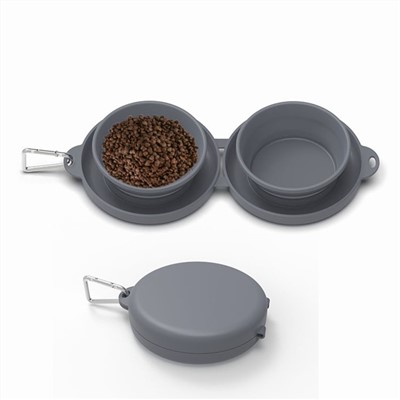
Pet Products Folding Outdoor Portable Double Folding Bowl
Read More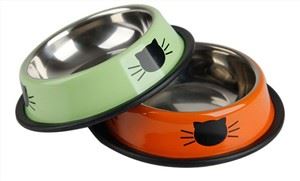
Stainless Steel Pet Bowl Single bowl thickened anti-upset cat food bowl glue edge color printed cat bowl Dog bowl wholesale
Read MoreFactory Shipping Pet Silicone Folding Bowl Go Out Travel Portable Dog Bowl dog Food Bowl Cat Bowl Foldable dog bowl
Read More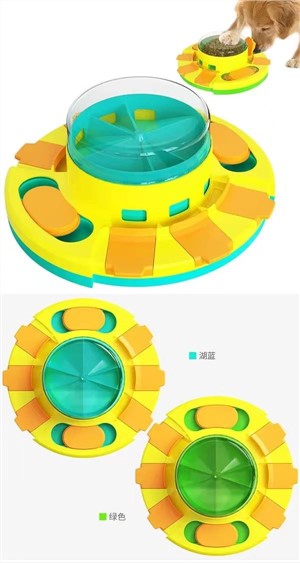
Dog Puzzle Toys,Difficulty Adjustable Interactive Puzzle Dog Toys for IQ Training & Mental Enrichment,Pet Intelligence Slow Food Toy,Dog Busy Educational Toys for Puppy,Medium,Large Dogs(Cruciform)
Read More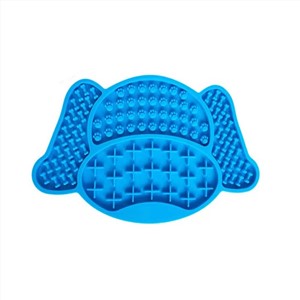
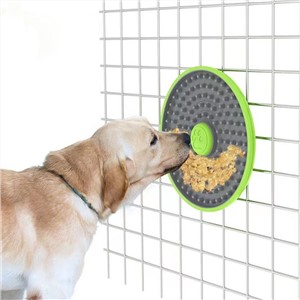
Slow Feeder Dog Bowls for Boredom Reducer,Dog Lick Pad,Dog Peanut Butter Lick Pad,Licking Plate for Dogs,Lick Pad for Dogs Anxiety Relief,Pet Slow Feeder Mat with Spiral Buckle
Read More